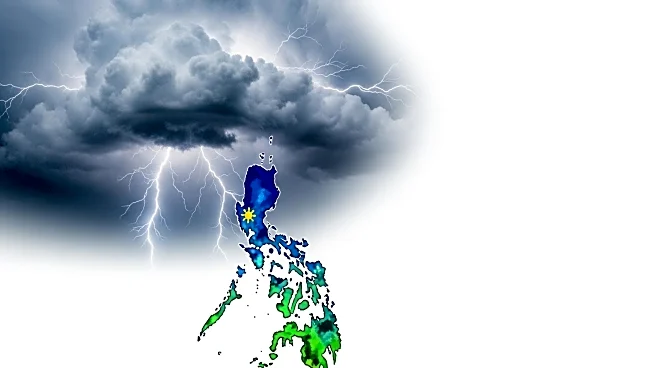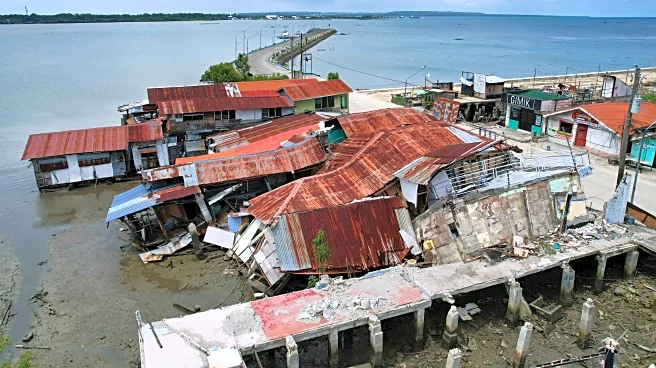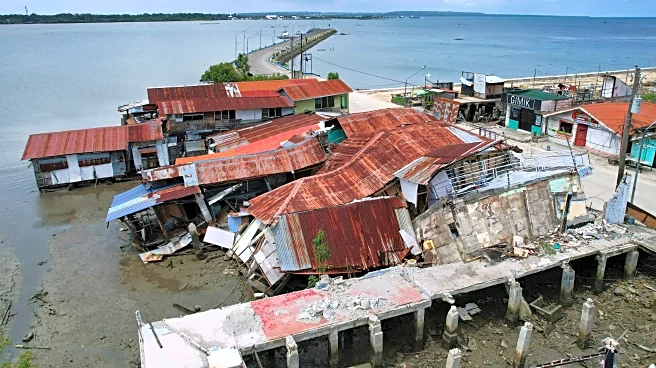What's Happening?
Typhoon Matmo made landfall in southern China on Sunday, significantly disrupting transportation and leading to the evacuation of over 151,000 people. The storm, which moved through the South China Sea, had maximum sustained winds of 104 miles per hour, equivalent to a Category 2 storm in the Atlantic. Authorities have raised concerns about potential flooding as the typhoon progresses inland. The storm initially hit Guangdong Province and is expected to weaken as it moves toward Guangxi Province. Forecasters predict heavy rainfall, with up to 12 inches expected in some areas, which could exacerbate flooding risks.
Why It's Important?
The impact of Typhoon Matmo is significant due to the timing during China's peak holiday season, affecting travel and safety for many residents and tourists. The evacuations and potential flooding pose challenges for local governments and emergency services, highlighting the need for effective disaster management strategies. The storm's progression could affect agricultural areas, potentially impacting food supply chains and local economies. Additionally, the typhoon underscores the importance of preparedness in regions prone to such natural disasters, prompting discussions on infrastructure resilience and climate adaptation strategies.
What's Next?
As Typhoon Matmo continues to move inland, authorities are likely to focus on monitoring flood-prone areas and coordinating relief efforts for affected communities. Emergency services may increase their presence to assist with evacuations and provide aid to those impacted by the storm. The government might also assess the damage to infrastructure and consider long-term measures to mitigate future risks. The situation could prompt international aid and collaboration in disaster response and recovery efforts.
Beyond the Headlines
The occurrence of Typhoon Matmo may lead to discussions on climate change and its role in intensifying weather patterns. The storm's impact on southern China could serve as a case study for understanding the broader implications of climate-related disasters in densely populated regions. Additionally, the event may influence policy decisions regarding environmental protection and sustainable development in vulnerable areas.











